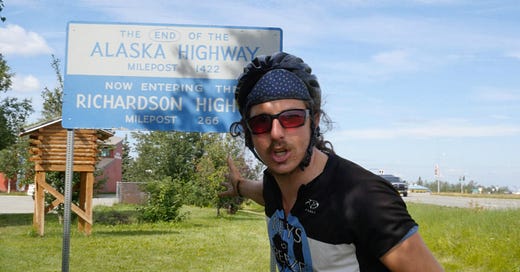Keys to Freeze, Mile 8000: Where America’s Last Road Leads to Frozen Oblivion
After 8,000 miles of cycling, the only thing left in our way was one long frozen road…with a few final thunderstorms, some raging wildfires, a couple of testy truck drivers and one seriously pissed-off grizzly bear.
Video by Brady Lawrence | Photos by Meredith Meeks
“Wait,” says Rachel. “This is it?”
We are straddling our bikes in the parking lot of the Deadhorse Camp, a hotel in the Keys to Freeze destination town of Deadhorse, Alaska. A red logo with the black bust of a mare is mounted atop the two-story, double-wide trailer that is our hotel. There are trucks covered in mud parked out front but there is no one outside. The wind whips through the parking lot and stirs up gravel dust. It is thirty-five degrees, and sunny — on August 6. Keys to Freeze is over.
After 8,000 miles and six months, through fourteen states, one province, and one territory, from the flats through valleys and mountain passes and in the rain, sleet, snow, ice and wind — always wind — the bike tour that we’ve lived, breathed and experienced at ten miles an hour on average, atop our trusted two-wheeled self-propelled machines, is over.
I look around and sigh, underwhelmed. One doesn’t go to Deadhorse for the social scene.
Keep reading with a 7-day free trial
Subscribe to Narratively to keep reading this post and get 7 days of free access to the full post archives.





